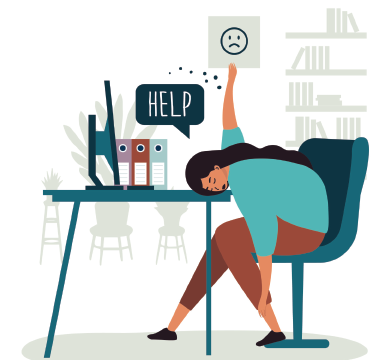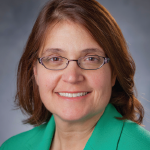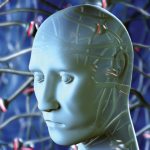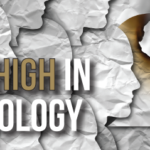
Chipolla / shutterstock.com
When it comes to experiencing burnout, time spent in an electronic health records (EHR) system appears to be only a minor contributing factor. Although clinicians and other healthcare professionals may log many hours at the keyboard putting information into the EHR, other factors likely play a bigger role in the workplace exhaustion and feelings of cynicism and ineffectiveness that are hallmarks of burnout, according to a study published in JAMA Network Open.
The study, “Clinician Burnout Associated with Sex, Clinician Type, Work Culture, and Use of Electronic Health Records,” centered on 1,310 clinicians at Duke Health, North Carolina, a large, tertiary-care academic medical setting. The researchers reviewed and analyzed the results of a May 2019 institutional well-being survey of the participants, overlaying the survey results with EHR usage data collected over the previous month.1
This approach helped the researchers separate clinician feelings about the EHR system from its actual impact on burnout, explains the study’s corresponding author, Eugenia McPeek-Hinz, MD, MS, associate chief health information officer for Duke University Health System, Durham, N.C.
“A lot of other studies have been surveys that ask clinicians, ‘How burned out are you?’ and then ask, ‘How much time do you spend in the EHR at work and after hours?’ So it’s like a Hawthorne effect [i.e., one question may affect recollections and a subsequent answer]: ‘I feel really burned out today, so I’ll say, yes, I spend six to eight hours every day in the EHR,’” she says. “What’s unique about our study, is that we took the EHR metrics from a period when the subjects didn’t even know we were looking at their EHR activities and behaviors.”
EHR Usage Details
Teasing out the impact of EHR usage on burnout is important, Dr. McPeek‑Hinz contends. “A tremendous amount of research and effort has gone into looking at how much time people are using the EHR, especially after hours, and there’s been a lot of thought that the after-hours time is driving burnout.”2-4 Thus, the researchers defined after hours to include time outside the normal appointment day: 30 minutes before the first appointment of the day to 30 minutes after the last, as well as any time spent in the EHR system during days off.

Dr. McPeek‑Hinz
When the researchers plotted the amount of after-hours time against the level of burnout—ranging from no burnout to mild, moderate and severe burnout—they saw no differences. “People reporting no burnout were spending proportionally just as much time after hours in the EHR system as the people who reported severe burnout,” Dr. McPeek-Hinz says.
“And surprisingly,” she says, “women who reported moderate to severe burnout were actually spending less after-hours time than those reporting no or mild burnout, which is almost counterintuitive, until you think that the after-hours EHR time is actually a way to provide flexibility. For example, a clinician can now finish a clinic at 4:30, go pick up their kids, make dinner, help the kids with homework, get them all in bed and then get back on the EHR. That after-hours aspect can be seen as a positive because it gives [them] the ability to do work at times that are most beneficial for [them].”
Another interesting aspect of the EHR-usage analysis is that the heaviest EHR users were not always the most burned out. “There are people who [spent] up to 6,000–8,000 minutes in the EHR for April 2019, but who are not burned out, but there are people with 1,000–2,000 minutes with severe burnout,” says Dr. McPeek-Hinz. One possible explanation is that some heavy users are seeing more efficiency in their use of the EHR.
“If a clinician is getting better results for their patients because of the time spent in the EHR, then that time is worth it,” says Dr. McPeek-Hinz. “So we can’t just look at hours spent, but [must] think about it in conjunction with an individual’s EHR efficiency and their patient outcomes.”
So What’s Behind Burnout?
The study results of the multivariate analysis showed that EHR usage contributed minimally to burnout compared with clinician demographics (1.3%) vs. the impact of local work culture (17.6%). EHR usage also had limited impact on burnout among users when grouped by sex, specialty or clinician type (i.e., attending physicians, advanced practice providers and house staff from various specialties).
An individual’s perception of work culture, including their commitment to the organization, work-life balance and teamwork, was a more significant indicator of burnout, correlating with a 17.6% hike in burnout levels, Dr. McPeek-Hinz says. “That was surprising to me, especially because so much of the literature has been suggesting that it was after-hours EHR use that was behind the higher burnout.”
For rheumatologists, the biggest take-home message from this study is that contribution of local work culture needs to be considered first. “We’re going to need to figure out ways to address burnout [among women] separately from burnout [among men] because we saw more burnout among women than men (52.0% vs. 47.6%). We also saw that female survey participants were on average about five years younger, so they may not have the same professional support level as older and higher-ranking physicians, or—on the personal side—may have different family needs,” Dr. McPeek-Hinz says. “In addition, I think we should consider how we can take some of the pressures off of specialists by finding ways to delegate duties and provide better team-based care, or reduce the number of patients they have to see in a day.”
Looking Ahead
Dr. McPeek-Hinz sees many opportunities for further research. For example, how do full-time equivalent employees (FTEs) experience burnout? Do burned-out clinicians decrease their clinic time to help manage other job and/or life responsibilities? If they do decrease clinic time, how are they using their non-FTE time? Are they devoting more hours to the EHR, and is their burnout subsequently subsiding?
For now, Dr. McPeek-Hinz is hoping to add to the story on clinicians, EHR use and burnout by beginning a similar study of nurses. For this project, she plans to work with Duke’s chief nursing information officer to access and review usage and wellness survey information. “I absolutely have no idea what the data is going to say, but we’ll do the same thing: spend a good couple of months looking at the data, try to understand what the data says, and [consider how to] actually use the data to understand connections between EHR usage and burnout,” she says.
Dr. McPeek-Hinz is also beginning a small study to explore differences between heavy-EHR-using providers, comparing those so-called high-performers who use EHR systems very efficiently, with low-performers. “We will be looking into whether there are EHR metrics between high- and low-performing providers and if we can perhaps identify the likelihood of burnout in a provider just from that metric.” She remarks, “I don’t know if we can do it, but we’re going to give it a try. Again, we’ll let the data talk.”
Leslie Mertz, PhD, is a freelance science journalist based in northern Michigan.
References
- McPeek-Hinz E, Boazak M, Sexton JB, et al. Clinician burnout associated with sex, clinician type, work culture, and use of electronic health records. JAMA Network Open, 2021 Apr 1;4(4):e215686.
- West CP, Dyrbye LN, Erwin PJ, Shanafelt TD. Interventions to prevent and reduce physician burnout: A systematic review and meta-analysis. Lancet. 2016 Nov 5;388(10057):2272–2281.
- Erickson SM, Rockwern B, Koltov M, et al. Putting patients first by reducing administrative tasks in health care: A position paper of the American College of Physicians, Ann Intern Med. 2017 May 2;166(9):659–661.
- Dyrbye LN, Trockel M, Frank E, et al. Development of a research agenda to identify evidence-based strategies to improve physician wellness and reduce burnout. Ann Intern Med. 2017 May 16;166(10):743–744.

